Meet The Artist Capturing North Yorkshire's Waterfalls
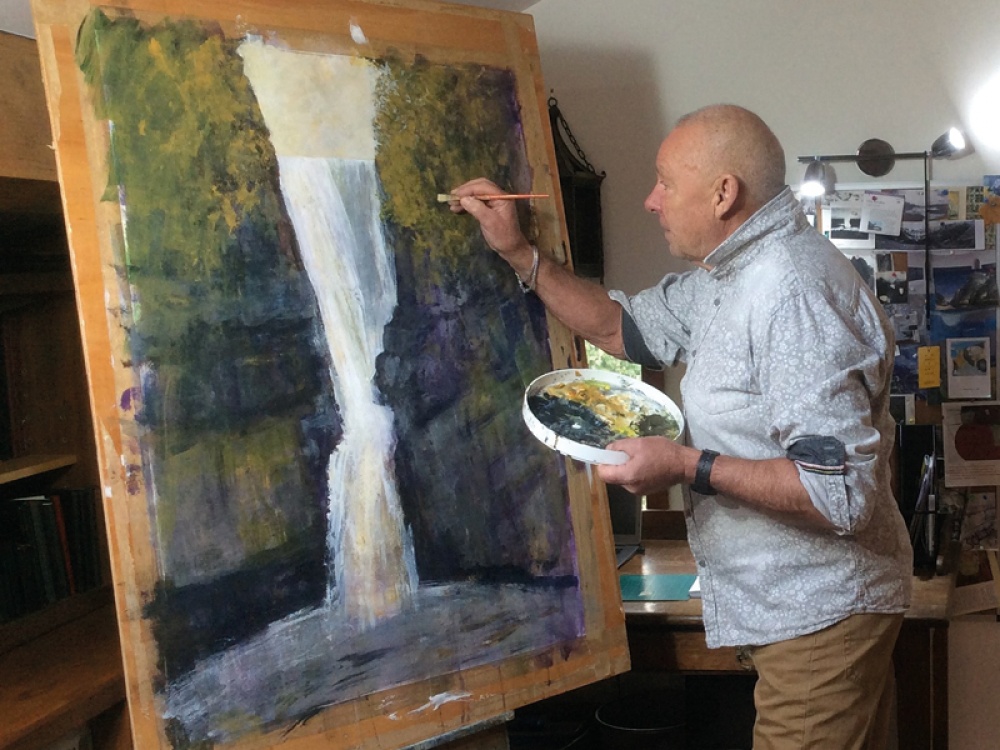
From immense cascades to gentle woodland falls, local artist Brian Burton spends his time painstakingly capturing North Yorkshire's waterfalls in his stunning abstract paintings
Having painted all his life, Brian Burton began to pursue his passion for art full-time during the pandemic, where the surrounding landscape of his home in North Yorkshire served as inspiration for his work. ‘It has always focused around landscape to one degree or another. My grandfather was a coal miner in Silksworth, Sunderland and he got me interested in nature. He took me on endless walks and taught me about plants, flowers and trees – it just inspired me to keep on looking,’ Brian explains. ‘I always walk around the places where I find inspiration and have my sketchbook with me as a mental jogger of what the place is really like.’
Brian makes it clear that his waterfall paintings are not intended to be exact representations. ‘I don’t use photographs on that basis. It’s about trying to capture the atmosphere of where you are,’ he says. ‘I moved to Hetton seven years ago, and around me I have Barden Moor and Malham Cove within a few miles but I think my waterfall interest started with Gordale Scar. There’s a waterfall there and it’s not really dramatic, but then we had a lot of rain a few years ago and places that I walked and knew every inch of were suddenly full of small waterfalls, and then you’d get the meltwater after the snow and waterfalls would appear that had never been there before.’
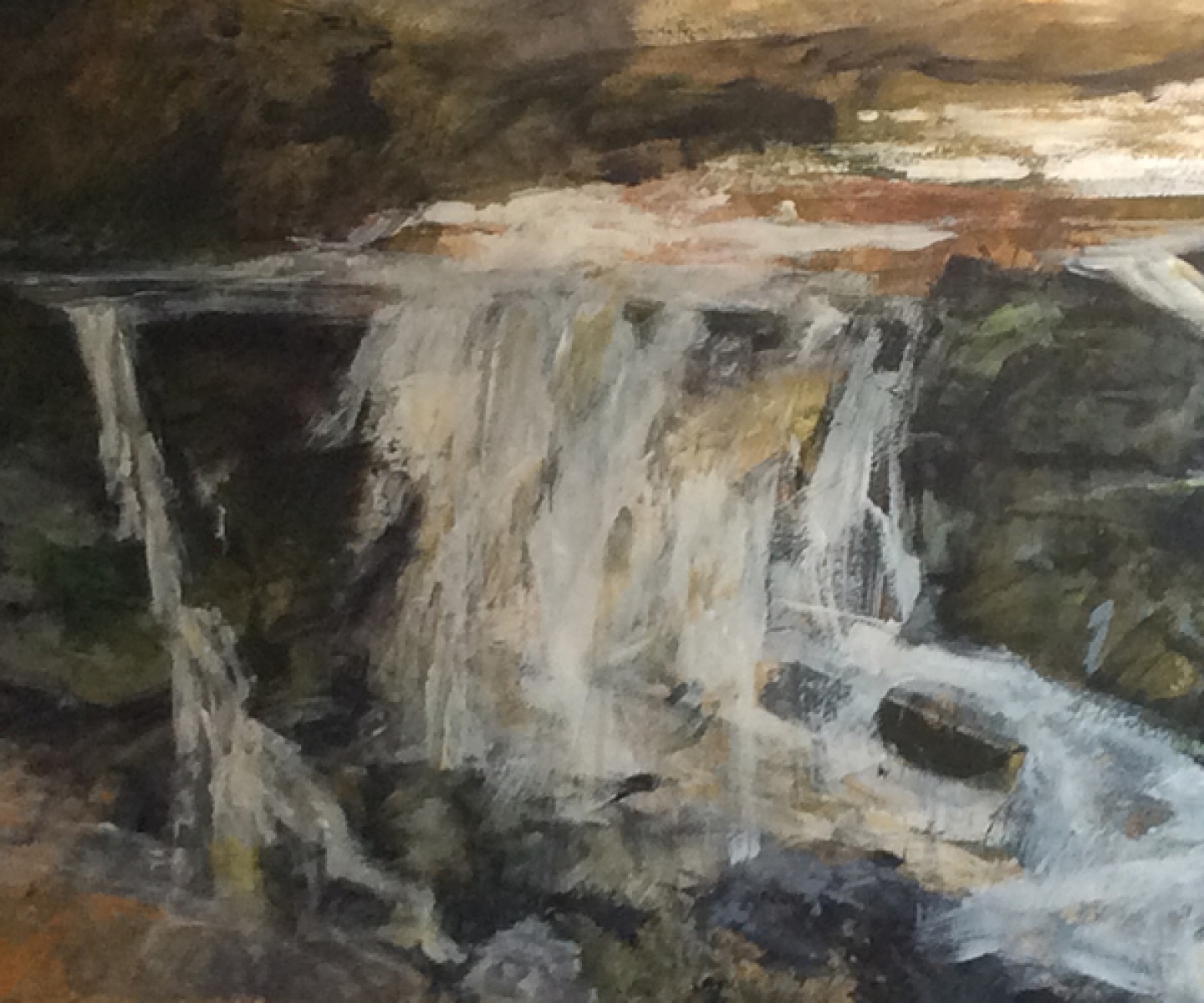
RYLSTONE, ‘MELTWATER’
‘Meltwater’ is another example of Brian’s fascination with how water can change in a landscape over the seasons, this time based on his explorations of Rylstone and the surrounding moorland. ‘That was after the snow had melted. The little rivulets from that won’t be there today, but the rest is just the force and the power of what has melted. It just shows how the landscape can totally change in days and it’s the volume of water that has saturated the ground so much that it overspills.’
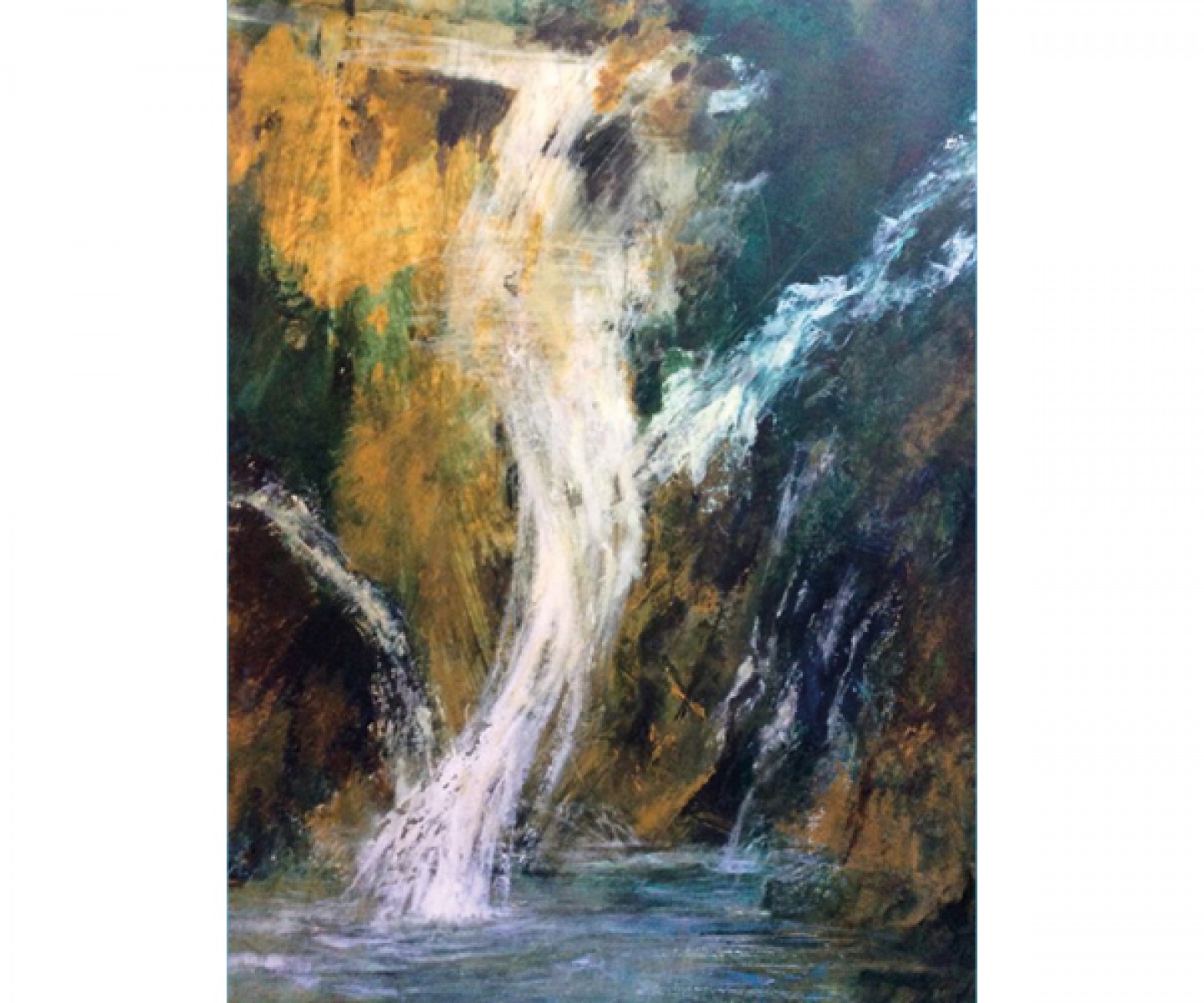
BARDEN MOOR, ‘CROSSWATER’
As well as the well-known waterfalls, Brian also draws inspiration from impermanent streams and rivulets caused by fluctuations in the weather. ‘Crosswater’ is inspired by water Brian has found flowing across Barden Moor. ‘That’s about 40 minutes walk from where I live and it’s quite an expansive moor. It’s just an abstract criss-cross mark over the landscape. I developed my sketches from there and it’s a bit more colourful than other ones but it captures the vigour of the water. It’s to do with the atmosphere and how the water hits the rocks,’ he explains. ‘Some people ask where is Crosswater and it isn’t actually one place, it’s an amalgamation of visits to one place. There’s often extremes of weather up on Barden Moor and sometimes it can be dry where it’s not normally dry, and just a different character.’
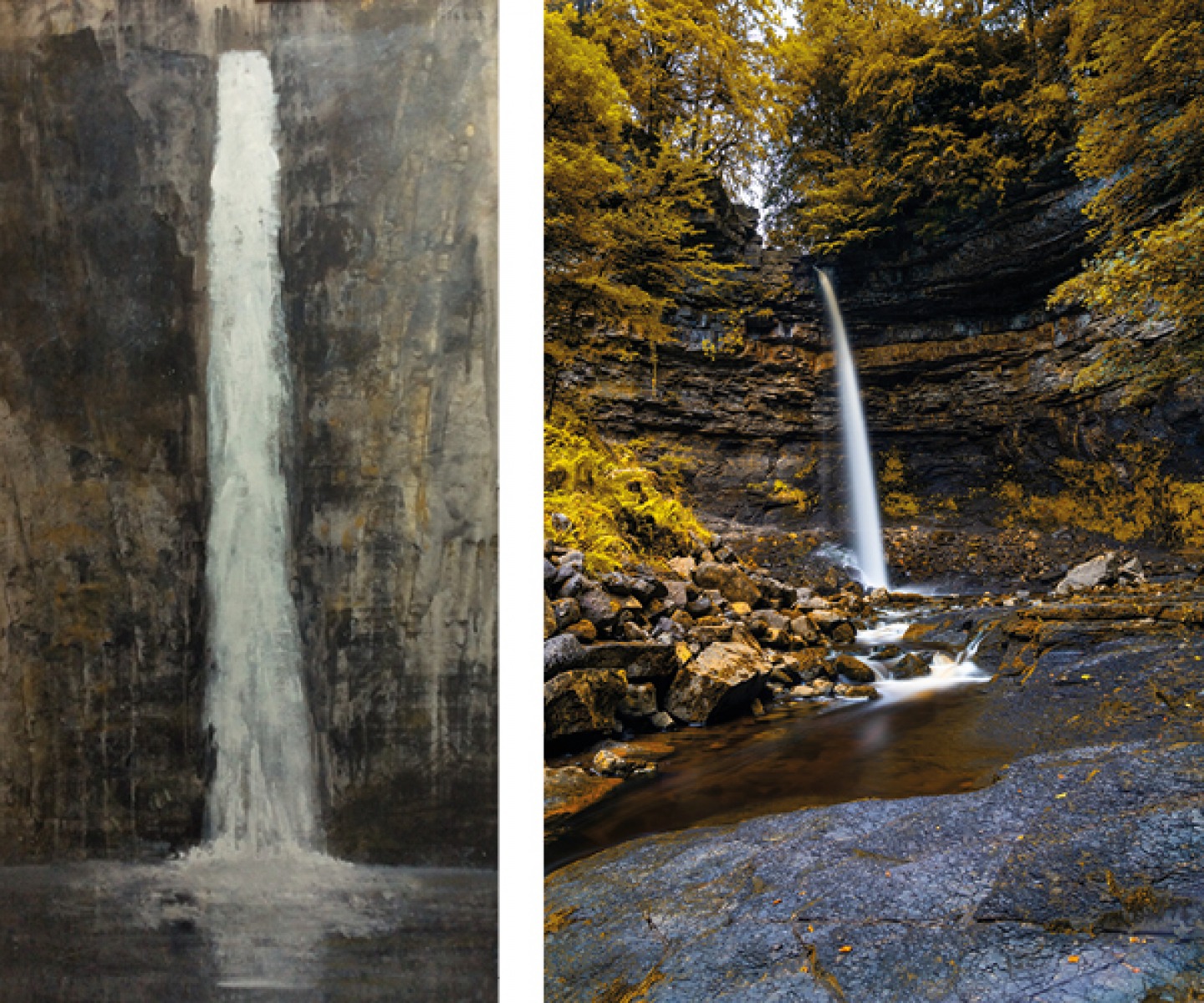
Hardraw Force, ‘Free Fall’
The largest single-drop waterfall in England (at an estimated 100 feet high), with its stunning drop and natural amphitheatre-shaped base, Hardraw Force in the Yorkshire Dales National Park serves as the inspiration for Brian’s ‘Free Fall’. ‘It’s just a sheer cliff and this one band of water falling from top to bottom. With the visual of the light following the water down, you could do it very abstractly and just do a stripe of white down a piece of paper – some of my sketches will look like that. Free fall is just a vertical hit of movement.’
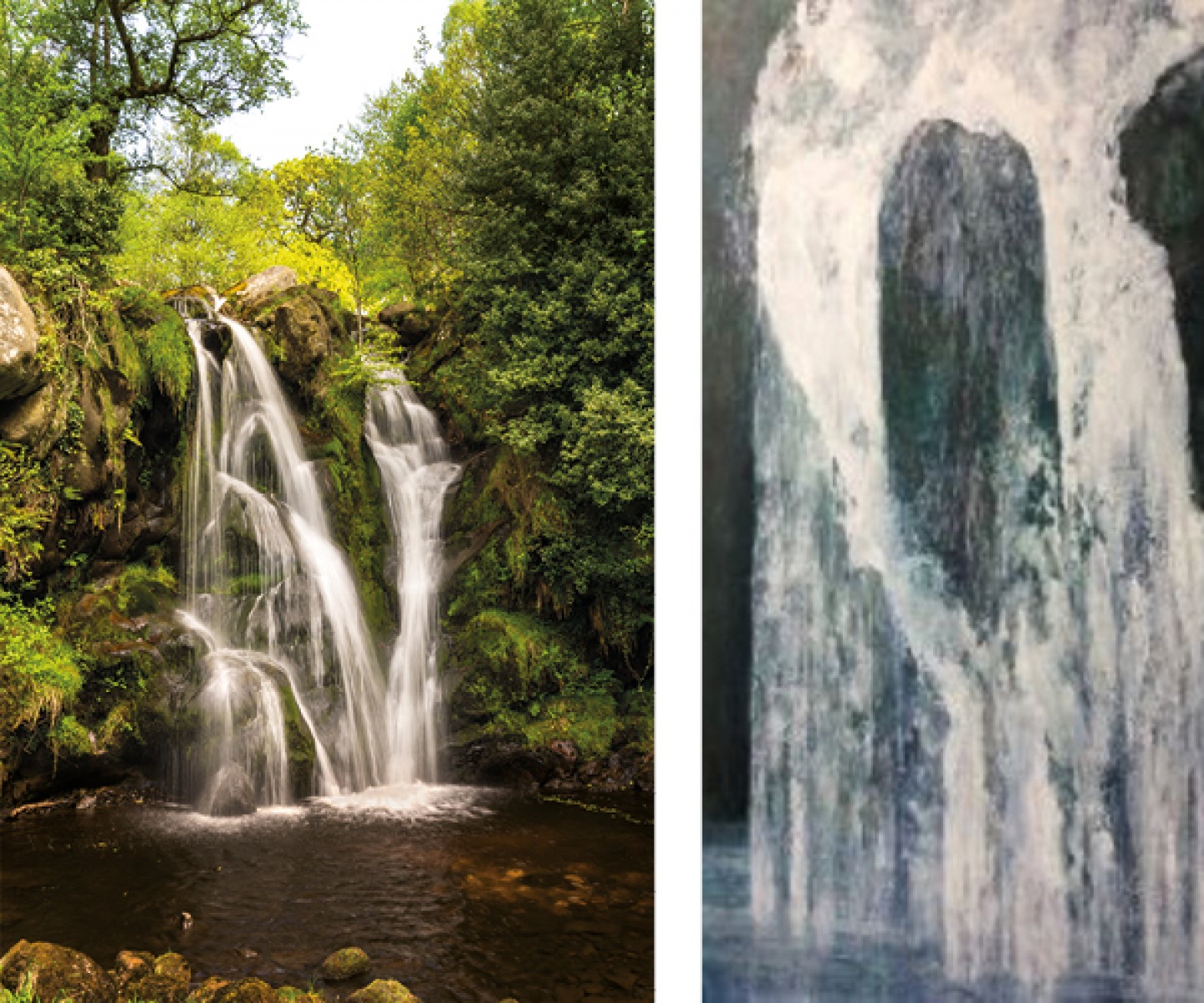
Posforth Gill, ‘Monolith’
In the Valley of Desolation, this waterfall is not far from Bolton Abbey. ‘It’s on the estate, but at the opposite side to where everyone usually goes, on the way up to Simon’s Seat,’ Brian explains. ‘I knew it was there but I’d never been and visited it properly until three years ago. That waterfall changes completely depending on how much water is seeping through the peat on the hillside and it splits into various sections. I was really pleased with that painting because I can see that the marks of paint show the movement and change in the pattern of the water. At the very top of the painting it’s almost a mist because it’s coming down with force, hitting the rocks underneath and evaporating so there’s no specific line through it until it starts to hit the lower rocks. At the bottom it makes that lovely curtain of water.’
Brian’s process is as free-flowing and natural as his subjects. ‘The sketches are ongoing and I don’t take colour with me on a sketching trip. It’s just visual reminders of what it was like, and sometimes I’ll scribble words down like what the weather was like. They all really invoke the atmosphere of where you’ve just been,’ he explains. ‘In a way it’s one of the hardest things to do. If I go back to Malham Cove tomorrow the rocks are still in the same place as they were before, but the atmosphere is different. The waterfalls are constantly moving and changing, and you’ll never see the same set of patterns again. It’s very elusive and my challenge is to try and capture that movement, the force and the power of the water, and then find the marks in paint to make that happen. I suppose the painting is finished when I’ve achieved in my mind what I saw.’
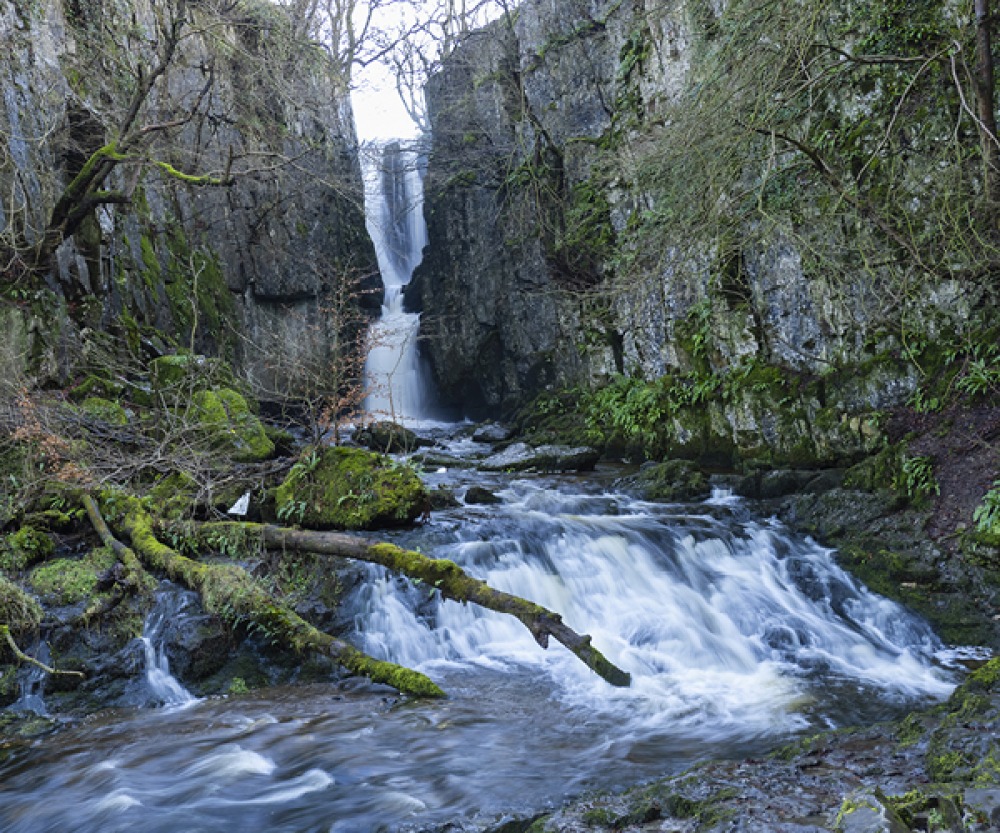
CATRIGG FORCE, ‘ELGAR’S FORCE’, ‘PUNCHBOWL’, ‘WAGNER’S CHASM’ AND ‘TRACERY FLOW’
A current favourite muse of Brian’s, Catrigg Force is a hidden gem of a waterfall deep within a wooded gorge near Stainforth. ‘I’d heard of it but had never been to it. It’s an incredibly steep climb, and then all of a sudden I could hear the water and that was just incredible. There’s a little wooded valley where the water comes off the top of the fields and just plunges down into this pool. I’ve probably been there six or seven times and it’s just magical.’ The title ‘Elgar’s Force’ is taken from the composer Edward Elgar, who had friends in Settle and enjoyed visiting the waterfall.
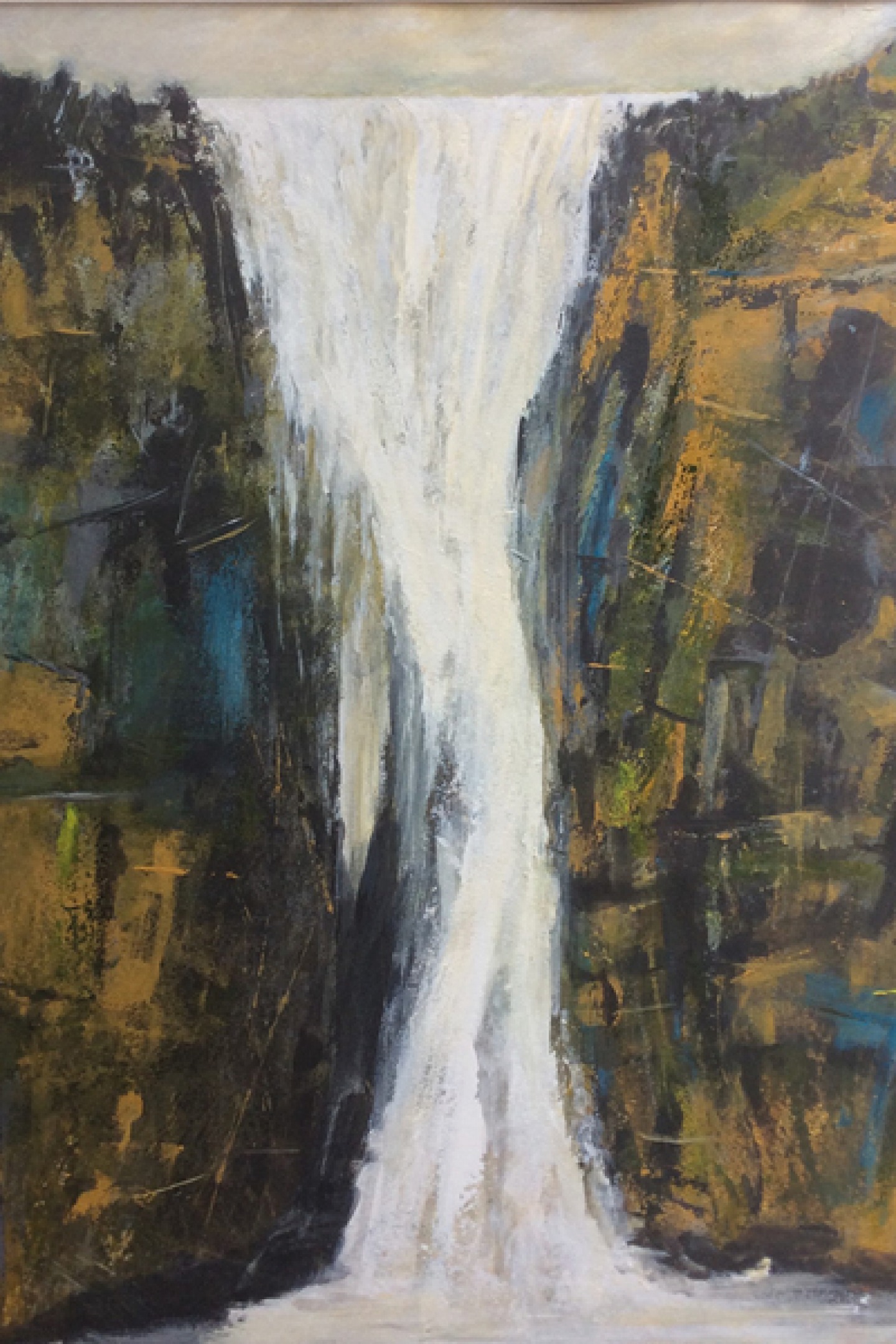
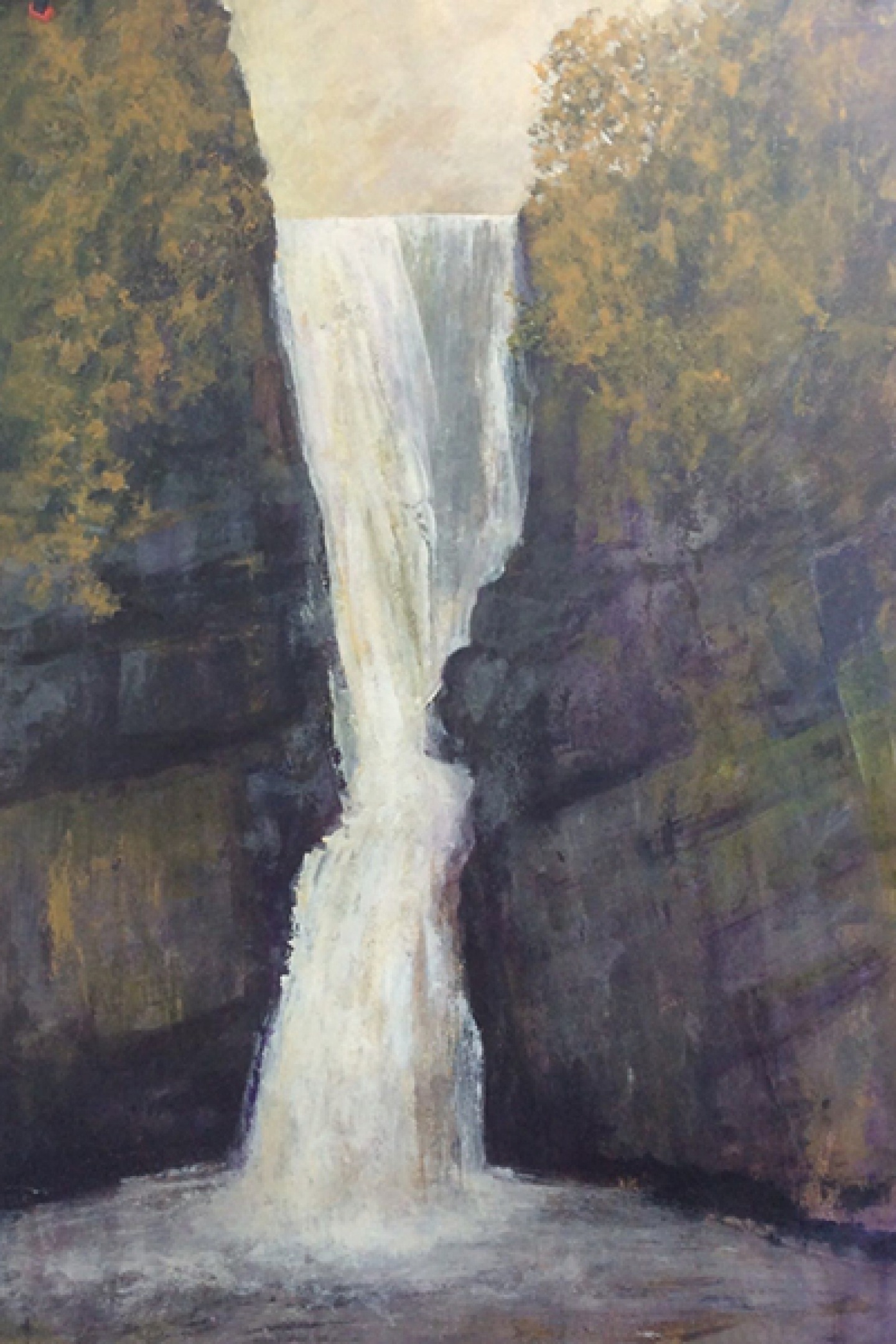

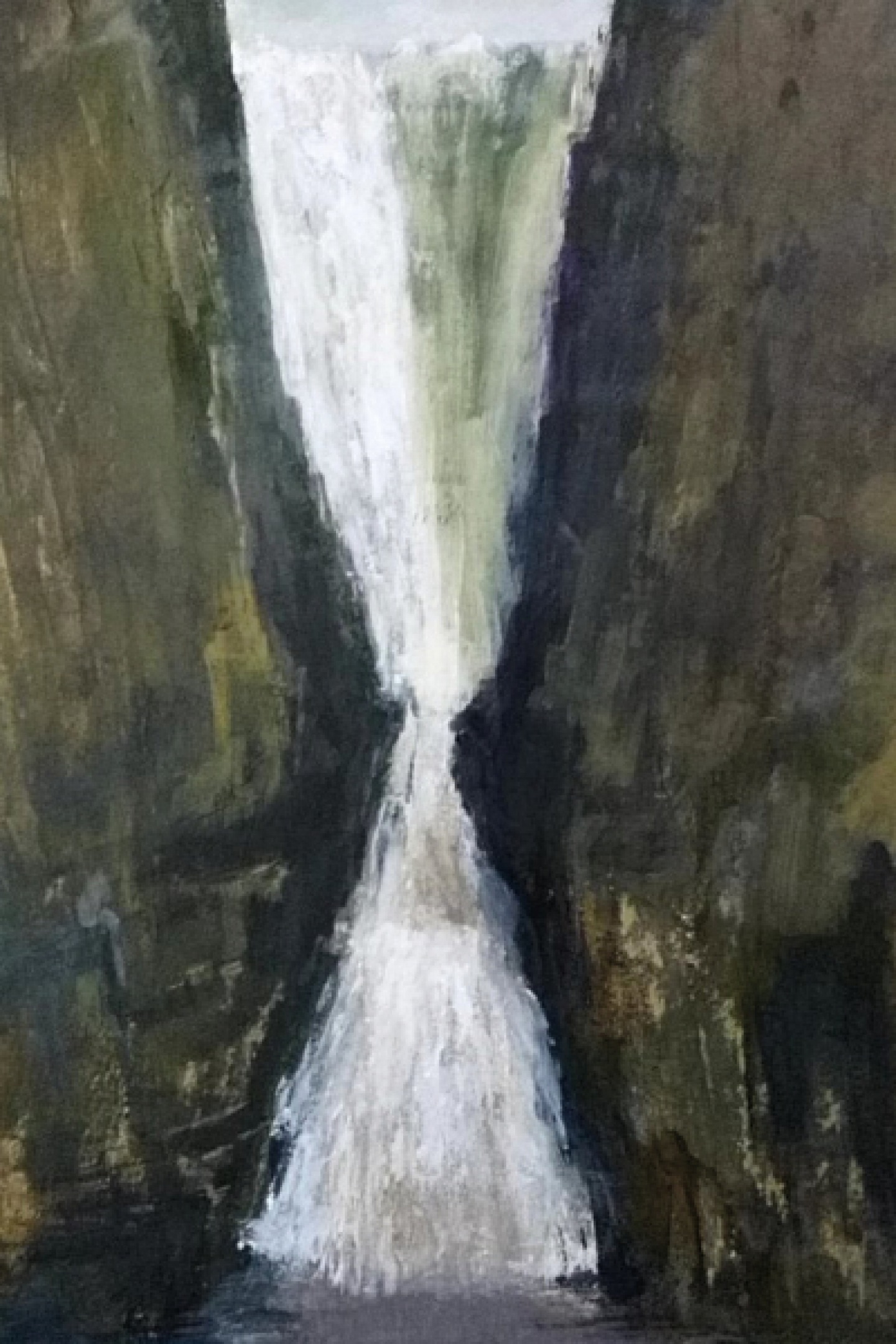
Janet’s Foss
Straight out of a fairytale, this small waterfall is best reached from Malham (about a mile away). The walk is easygoing and if you’re feeling brave the plunge pool below the waterfall is perfect for a dip.
Aysgarth Falls
This waterfall may not be high, but the force of the water over three distinctive steps is undoubtedly impressive. Aysgarth Falls has attracted many famous faces over the centuries (including William Wordsworth and J.M.W. Turner) and set the scene for Robin Hood: Prince of Thieves.
Kisdon Force
A series of powerful waterfalls on the River Swale, the falls drop around 10 metres over two cascades and can be reached by foot along the riverside path from Keld. The walk can be precarious in parts when it has been raining, so care should be taken.
Cauldron Falls
Also known as West Burton Falls, this is a short walk from a pretty village by the same name and is known for its beautiful plunge pool, which was painted by J.M.W. Turner on his visits to the Dales.
Cotter Force
An impressive series of waterfalls on Cotterdale Beck in Wensleydale, Cotter Force is easy to access and is a haven for local wildlife including kingfishers, redstarts, dippers and grey wagtails.
Brian’s latest solo exhibition, ‘FLOW LIKE WATER’ will be held at Craven Arts House, Skipton from 16th October to 9th November (Wednesdays–Saturdays). See www.cravenarts.co.uk for details.







